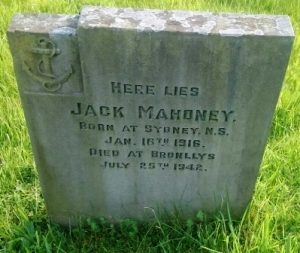Bronllys is a small village in Breconshire, situated between the nearby towns of Brecon and Talgarth. Just south of the village, on the road to Talgarth, are the ruins of a Norman Motte and Bailey Castle. Also situated within the village is St. Mary’s Church. The men of Bronllys who fell during both World Wars are commemorated on the Bronllys war memorial, which is situated inside the churchyard. The memorial takes the form of a granite scroll and commemorates two men who fell during the Great War and five men who fell during World War Two. I have also added the details of other men known to have been from Bronllys, plus three others who are buried in the churchyard but who are not commemorated on the war memorial. There is also a seperate war memorial inside the Church to its Parishioners who served during the Great War and returned home.
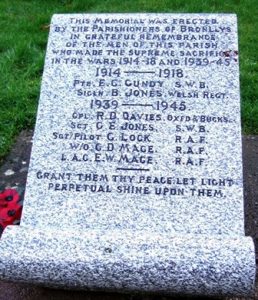
The Great War, 1914-1918
John Cynfyn Davies, Private, 55432, Royal Welsh Fusiliers. John was born at Bronllys Vicarage in 1893, the son of the Reverend William Jones Davies and Margaret Agnes Davies (nee Morgan). He spent most of his youth at Bronllys, but following the death of his mother in 1900, his father sent John and his sister, Margaret, to live with his family at their farm at Farmers, Llanwrda. John enlisted at Lampeter into the Pembrokeshire Yeomanry soon after the outbreak of war and was posted to Norfolk for training. He was drafted to France in the autumn of 1916 among a draft of reinforcements for the 16th Battalion, Royal Welsh Fusiliers. The battalion was attached to 113 Brigade, 38th (Welsh) Division and had just moved to positions alongside the canal bank north of Ypres, following heavy losses at Mametz Wood in July. The infantry battalions of the Division then began carrying out the normal pattern of rotation in the trenches, four days in the front, four in support and four in reserve, whilst also working on trench improvement, digging new trenches, and carrying out regular patrols and trench raids. On 31 July 1917 the Division launched its famous assault on the Pilckem Ridge, capturing Iron Cross and reaching its objective of the Steenbeek, then played a supporting role in the Battle of Langemarck. The Division was transferred to the Sailly-sur-la-Lys sector in September and remained in the area over the winter before being moved to positions north of Albert, at Bouzincourt Ridge, at the end of March 1918, relieving the battered 2nd and 47th Divisions. It held this sector, carrying out several minor operations and trench raids over the coming weeks, intended to advance the line onto the high ground of the ridge. The 16th RWF spent two days at Warloy on 20-21 April, training in preparation for one such assault. On the night of 21 April, the battalion marched into its assembly positions and at dawn on the following morning, 22 April 1918, launched an assault upon the German trenches, advancing behind a creeping artillery barrage. John was killed in action during the advance that day, in a failed assault which saw over 250 casualties. The 25-year-old has no known grave is commemorated on the Pozieres Memorial, France. John is not commemorated on the Bronllys war memorial, but on the Pumsaint war memorial, in Carmarthenshire.
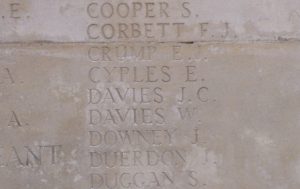
Edward Charles Gundy, Private, 29126, South Wales Borderers. Edward was the son of Charles Gundy and Mary Clara Gundy (nee Meredith), of Sunny Bank, Bronllys. He worked as a farm servant prior to gaining work as a coalminer at Merthyr just prior to the war. Edward enlisted into the 3rd Battalion, South Wales Borderers early in 1915 and joined the battalion at Hightown, Liverpool, where it formed part of the Mersey Garrison. He was drafted to France during the spring of 1917, joining the 1st Battalion, South Wales Borderers, which was attached to 3 Brigade, 1st Division. The Division had taken part in terrible fighting during the Somme offensive, suffering especially heavy casualties at Bazentin Ridge and during the Battle of Pozieres. Following further fighting during the Battles of Flers-Courcelette and Morval, the Somme offensive died down and the Division settled into the Somme lines for the winter. The Division followed the German withdrawal to the Hindenburg Line in early 1917 and was then briefed for an operation on the Flanders Coast, moving to positions near Coxyde during the summer of 1917. Whilst the coastal operation was being prepared, the British were forced into a change of plan, due to the failure of the main offensive at Ypres to break the Germans and the 1st Division was among a number of other units transferred to the Ypres front at the end of October 1917. The units of the Division carried out a training scheme before moving into the front line on Passchendaele Ridge by 8 November. On the following day the 1st SWB received operational orders for the battalions move which specified plans for an assault and took over positions near Valour Farm, to the rear of the 2nd Welsh, that afternoon. The plans were detailed, but were for an assault on the Goudberg Spur, which included specific objectives of a number of fortified farms. The battalion launched its assault, in conjunction with the 2nd Welsh, at dawn on 10 November 1917, behind a creeping artillery barrage. The Germans rained heavy machine-gun fore onto the attacking troops, causing terrible casualties as the men attempted to advance through the thick mud. Edward was killed in action during the assault that morning. The 22-year-old has no known grave and is commemorated on the Tyne Cot Memorial, Belgium.
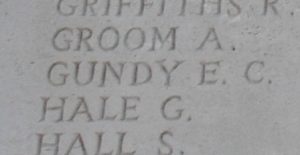
Bernus Jones, Private, 44923, Welsh Regiment. Bernus was the son of Thomas Jones and Emily Jane Jones (nee Pritchard), of Lodge, Pontywal, Bronllys. He worked as a farm servant prior to leaving Bronllys to find work at Bargoed prior to the war. Bernus enlisted at Talgarth into the army and after completing his training was drafted to France in the winter of 1916-17, joining the 15th Battalion, Welsh Regiment. The battalion, known as the Carmarthen Pals, was attached to 114 Brigade, 38th (Welsh) Division and had moved to Ypres in the summer of 1916 following heavy losses suffered in the assault on Mametz Wood. The Division took over a section of the canal north of Ypres at Boesinghe and its infantry battalions then began carrying out the normal pattern of rotation in the trenches, four days in the front, four in support and four in reserve, whilst also working on trench improvement, digging new trenches, and carrying out regular patrols and trench raids. On 31 July 1917 the Division launched its famous assault on the Pilckem Ridge, capturing Iron Cross and reaching its objective of the Steenbeek, then played a supporting role in the Battle of Langemarck. The Division was transferred to the Sailly-sur-la-Lys sector in September and remained in the area over the winter before being moved to positions north of Albert, at Bouzincourt Ridge, at the end of March 1918, relieving the battered 2nd and 47th Divisions. It held this sector, again carrying out minor operations and trench raids, over the coming months, before taking part in the great offensive of 21 August 1918, and began its advance towards the Hindenburg Line. On 28 August 1918 the 15th Welsh was relieved and moved back into divisional reserve. Later that night, the battalion moved into positions east of Delville Wood, and at 05.00 on 29 August took up positions’ northeast of Ginchy, where the battalion remained in brigade support, while the remainder of 114 Brigade, the 13th and 14th Welsh assaulted the village of Morval. Bernus was killed in action here on 30 August 1918. The 28-year-old has no known grave and is commemorated on the Vis-en-Artois Memorial, Haucourt, France.
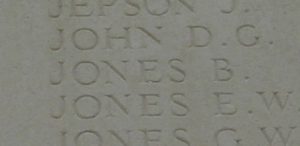
Alexander Sturrock Low, Second Lieutenant, Cameronians (Scottish Rifles). Alexander was the son of Henry Drummond Low and Alexandrina Low, of 5, Woodville Place, Dundee. He emigrated to Canada as a young man and became a cashier for the Northern Assurance Company at Winnipeg. Alexander enlisted at Winnipeg into the Canadian Expeditionary Force on 18 December 1914 and embarked for England with the 43rd Battalion, Canadian Infantry. Upon his arrival at East Sandling he was transferred to the 16th Battalion, Canadian Infantry, joining the battalion at Ypres on 17 July 1915. Alexander would have taken part in the terrible fighting for Mount Sorrel and Hill 62 the following Spring. He then left the battalion to take up a commission as Second Lieutenant into the Scottish Rifles on 4 August 1916. He was then posted to the 10th Battalion, Scottish Rifles, which was attached to 46 Brigade, 15th (Scottish) Division. Alexander joined the battalion at Baizieux on 11 November 1916, where it was rebuilding following its efforts during the Battle of Le Transloy, and in the attacks on the Butte de Warlencourt. On 18 December 1916 the 10th Scottish Rifles moved back into the front-line trenches at Le Sars, to begin a routine tour, but by now the Somme offensive was over. By the end of February 1917, the Division had moved into positions near Arras. It then took part in the First Battle of the Scarpe, and then at the Second Battle of the Scarpe, where it captured Guemappe. At the end of April, the Division was relieved and moved to the rear for training and refitting, before being transferred to the Ypres Salient, reaching Poperinghe by 18 June. Two days later the 10th Scottish Rifles moved forwards to take up reserve positions on the Ypres ramparts, with one Company moving to the Ecole and HQ setting up on the Menin Road. Alexander was badly wounded when Ecole was hit by a German shell on 23 June 1917. He was evacuated to the Casualty Clearing Station at Brandhoek where he died of his wounds that same day. The 28-year-old is buried in Brandhoek Military Cemetery, Belgium. By the time of his death, his mother Alexandrina had moved to The Laurels, Bronllys, however Alexander is not commemorated on the Bronllys war memorial.
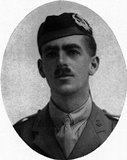
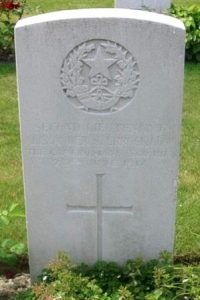
World War Two, 1939-1945
Francisco Canipane, Second Officer, Merchant Navy. Francisco was a sailor from Chile and had moved to Swansea just after the Great War. He married Emily Elizabeth Fanny Honeybun at Swansea in 1923 and the couple lived at 41, Baglan Street, Swansea. Francisco continued to serve at sea with the Merchant Navy in between the wars and by the time war broke out was serving as First Mate aboard the Llanelli registered SS Sarastone. On 22 December 1940 Sarastone was steaming in the Mediterranean, having become detached from Convoy OG-47, when she was attacked by the Italian submarine Moncenigo. She managed to evade the Italians and carried on with her voyage safely. On 29 October 1941 she had just left the Spanish port of Huelva when she was torpedoed and sunk. The only casualty was the ships Chief Engineer, Thomas Armstrong Russell, but Francisco had been injured during the attack. Fortunately, he was rescued along with the remainder of his crew, but his experiences had been detrimental to his health and he later took ill. Francisco was sent to Talgarth Sanatorium after being diagnosed as having contracted tuberculosis and died there on 11 December 1944. The 50-year-old was buried in St. Mary’s Churchyard, Bronllys. Frank is not commemorated on the Bronllys war memorial.
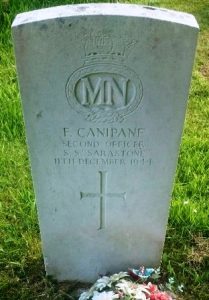
Stefan Daniel, Vojin, J.7, Czechoslovakian Army. Stefan was a Czech soldier who had managed to escape to Britain following the fall of France in May 1940 and served with the 1 Obrnena Brigada, the 1st Czech Armoured Brigade. The unit had been formed on 1 September 1943 from remnants of the1st Czechoslovak Division serving in the French Army and converted to armour. The unit trained in Britain until the summer of 1944 when it moved to Normandy, joining 21st Army Group at Falaise on 30 August. On 6 October, the brigade advanced to Dunkirk, where it played a vital part in subduing the German garrison during the siege of Dunkirk. Stefan took ill several months later and was invalided home to Britain, before being sent to Talgarth Sanatorium to be treated for tuberculosis. He died there on 26 March 1945. The 33-uear-old is buried in St. Mary’s Churchyard, Bronllys. Stefan is not commemorated on the Bronllys war memorial.
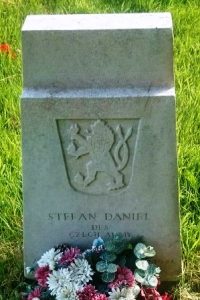
Robert David Davies, Corporal, 5388603, Ox and Bucks Light Infantry. Robert was born on 19 November 1920, the son of Ernest Walter Davies and Lucy Davies (nee Lewis), of Gable House, Bronllys. He enlisted into the army and was posted to the 1st Battalion, Ox and Bucks Light Infantry. The battalion had been in France with the BEF in 1940 and was evacuated from Dunkirk, being brought back up to strength before being posted to the 148th Independent Brigade Group in Northern Ireland. In June 1942 the battalion was transferred to the 71st Infantry Brigade, 42nd Armoured Division. In October 1943 the brigade became part of the 53rd (Welsh) Infantry Division and started training for the invasion of North-Western Europe. The 1st Ox and Bucks landed in Normandy on 24 June 1944 with the rest of the 53rd (Welsh) Division and saw its first major action during Operation Epsom, the attack on Caen. The 1st Ox and Bucks then saw heavy fighting around the Odon Bridgehead during the German counterattack which followed. During August the battalion took part in an advance towards Falaise, known as Operation Totalize. Robert was killed during the operation, on 13 August 1944. The 24-year-old was originally buried in Laurent de Condel, alongside a number of other men of the 53rd (Welsh) Division, but on 1 October 1945 their graves were re-interred in Banneville-La-Campagne War Cemetery, France.
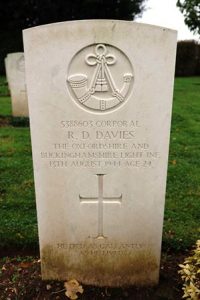
George Emlyn Jones, Lance Serjeant, 4079485, South Wales Borderers. George was born at Porthamel Mill, Talgarth on 10 August 1911, the son of Richard and Elizabeth Jones. The family was residing at Three Cocks, Breconshire prior to the war. George was already serving with the Territorial Army prior to the war and served with the 1st Brecknockshire Battalion, South Wales Borderers. The battalion became a Home Guard unit following the outbreak of war and was posted to Liverpool, as part of the Mersey Garrison. George was killed during an air raid, whilst billeted at 107, Rice Lane, Liverpool on 6 September 1940. The remains of the 29-year-old were brought to Llanwnog, and he was buried in St. Gwynog’s Churchyard, Llanwnog.
George Lock, Sergeant, 1293568, Royal Air Force Volunteer Reserve. George was born in Monmouthshire on 14 September 1921, the son of Courtney Wilson Lock and Sarah Ann Lock. The family moved to 1, Rose Villa, Bronllys when he was young. George was educated at Brecon Grammar School before gaining work in London. He enlisted into the Royal Air Force Volunteer Reserve soon after the outbreak of war and after qualifying as a pilot in America on 6 February 1942, he gained his silver USAAF pilots wings as well as his RAF wings. Upon his return to England, he received further training before being posted to the Telecommunications Flying Unit at RAF Defford, at Croome Court in Worcestershire. The airfield was a top-secret base, which carried out research and tests on radar. On 26 February 1943, George was flying over Pirton aboard a Supermarine Spitfire Ia, Serial X4918, when he collided with a Tiger Moth from the same squadron and crashed to the ground near Pirton Pool. The 21-year-old was killed instantly. His remains were conveyed home and he was buried in St. Mary’s Churchyard, Bronllys. There is a display in the RAF Museum at Croome Court dedicated to George, which also contains several photographs of him and his wings, as well as the Merlin engine from his Spitfire. His father had gained the award of the Distinguished Conduct Medal whilst serving with the Devonshire Regiment during the Great War.
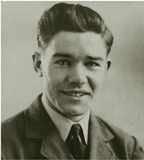
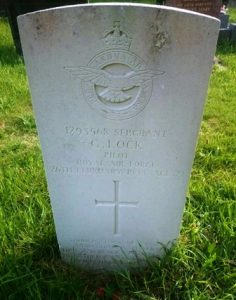
Charles Douglas Mace, Warrant Officer, 525691, Royal Air Force. Charles was born at Cheltenham in 1917, the son of Joseph John Mace and Alice Mace (nee Marsh). The family came to live at Pontywall Sanatorium, Bronllys when Charles was young, as his father had taken up the post of head gardener there. Charles enlisted into the Royal Air Force and trained as a pilot before being posted as an instructor to 2 Operational Training Unit at RAF Catfoss, in Yorkshire. The unit trained men destined for RAF Coastal Command and was equipped with a variety of aircraft, including the Bristol Blenheim. On 7 November 1941, Charles took off from Catfoss, flying Bristol Blenheim, Serial L1149, on a training flight with a young pilot, Sergeant Thomas Woodward. The starboard engine of the Blenheim failed during take-off and the aircraft crashed within the airfield, killing Charles and mortally injuring Thomas Woodward. Charles was 24 years old when he was killed in the crash that morning. His remains were brought home for burial in St. Mary’s Churchyard, Bronllys. His brother Ernest William Mace also died on active service.
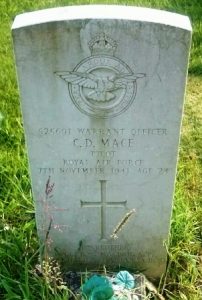
Ernest William Mace, Leading Aircraftman, 542549, Royal Air Force. Ernest was born at Cheltenham in 1915, the son of Joseph John Mace and Alice Mace (nee Marsh). The family came to live at Pontywall Sanatorium, Bronllys when Ernest was young, as his father had taken up the post of head gardener there. Ernest enlisted into the Royal Air Force and trained as a Leading Aircraftman before being posted to No 4 Service Flight Training School, which was based at RAF Habbaniyah, in Iraq. Ernest was mortally wounded during an air raid on Habbaniyah on 6 May 1941 and died of his injuries the following day, 7 May 1941. The 25-year-old is buried in Habbaniya War Cemetery, Iraq. His brother Charles Douglas Mace also died on active service.
Gordon Mahoney, Able Seaman, Merchant Navy. Gordon, known as Jack, was born at Sydney, Cape Breton County, Nova Scotia, Canada on 16 January 1916, the son of Michael and Caroline Mahoney. He enlisted into the Merchant Navy and was posted aboard the Dutch ship SS Katwijk. Gordon took ill while Katwijk was in Britain in June 1942 and was sent to Talgarth Sanatorium after being found to have contracted tuberculosis. He died there on 25 July 1942. The 26-year-old was buried in St. Mary’s Churchyard, Bronllys. Gordon is not commemorated on the Bronllys war memorial.
